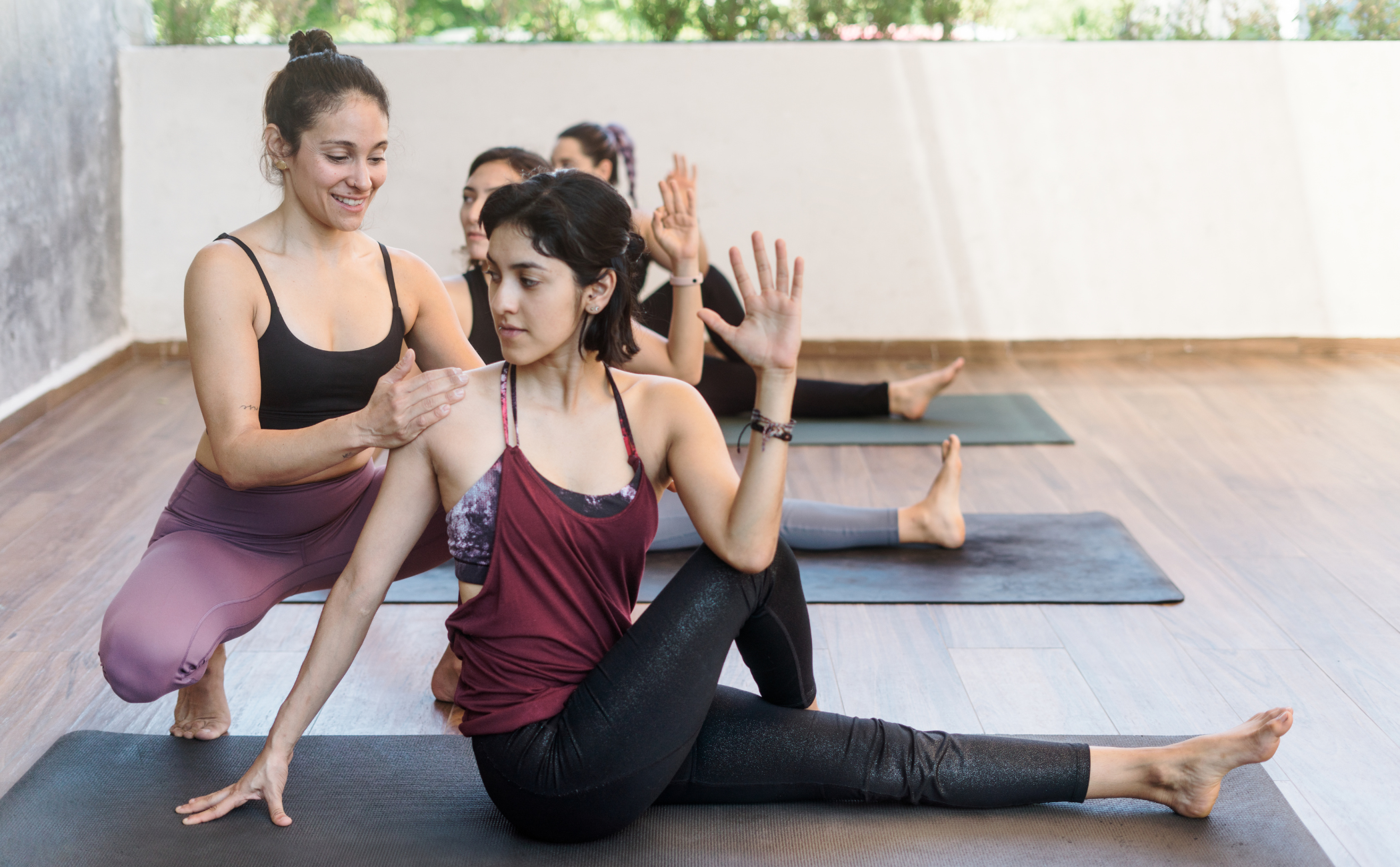Staying active is vital at every age, and seniors are no exception! Exercise isn’t just about looking good; it’s about feeling good. Regular physical activity can significantly improve seniors’ overall health and well-being. From boosting mood and reducing stress to strengthening bones and improving balance, the benefits are numerous.
Don’t let age limit your potential! There are many exercises that have been designed especially for seniors, such as low-impact activities like walking, swimming, and yoga. These are gentle yet effective workouts that help maintain flexibility, increase strength, and improve cardiovascular health. So, let’s ditch the excuses and embrace an active lifestyle. Your body will thank you!
Beginner’s Home Gym Guide For Seniors
Take the first step in your fitness journey from home. This beginner-friendly guide will prepare you with all the essential knowledge and tools to develop a safe and effective workout routine. Key principles are included, which will lead you to success, such as consistency, proper form, and listening to your body. We will also find out how to start slowly and progressively intensify your workouts while ensuring you have found activities that you truly enjoy.
Every fitness journey starts with a single step. Following these principles and including regular exercise in your routine will help you reach your goal of becoming healthier, stronger, and more confident.
Equipment Required :

Resistance bands:( For rows, hamstring curls, and potentially other exercises.)
Light dumbbells:( For overhead press, rows, and lateral raises.)
Yoga mat (For comfort and to protect your joints during floor exercises like planks, glute bridges, and crunches.)
Day1: Lower Body & Core


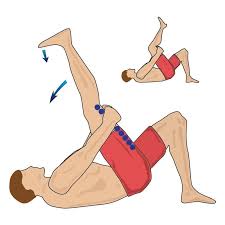

Warm-Up : 5-10 minutes of light cardio, such as walking, jogging in place, or arm circles.
- Bodyweight squats (10-15 reps)
- Glute bridges (10-15 reps)
- Plank (hold for 30 seconds, repeat 2-3 times)
- Leg raises (10-15 reps per leg)
Cool-down: 5-10 minutes of light cardio and stretching.
Stretching: Hamstrings, quads, calves, lower back.
Day2 : Upper Body & Core
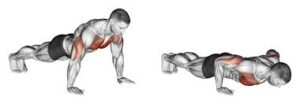



Warm-up: 5-10 minutes of light cardio, such as walking, jogging in place, or arm circles.
- Push-ups (modified on knees if needed) (10-15 reps)
- Rows (using resistance bands or light dumbbells) (10-15 reps)
- Overhead press (using light dumbbells) (10-15 reps)
- Supermans (10-15 reps)
Cardio : Swimming (30 minutes)
Stretching : Hamstrings, quads, calves, lower back.
Day3 : Rest or Active Recovery
Light activity like walking, yoga, or gentle stretching.
Cool-down: 10 minutes of slow jogging and rest.
Stretching : Hamstrings, quads, calves, lower back and all body stretches.
Day4 : Full Body Circuit



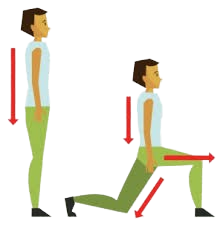
 Warm-up: 5-10 minutes of light cardio, such as walking, jogging in place, or arm circles.
Warm-up: 5-10 minutes of light cardio, such as walking, jogging in place, or arm circles.
- Squats (10-15 reps)
- Push-ups (modified) (10-15 reps)
- Rows (10-15 reps)
- Lunges (10-15 reps)
- Overhead press (10-15 reps)
- Repeat the circuit 2-3 times.
Cool-down: Cardio with Cycling (30 minutes)
Stretching: Full body stretch
Day5 : Lower Body & Cardio

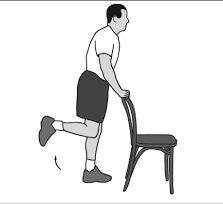

Warm-up: 5-10 minutes of light cardio, such as walking, jogging in place, or arm circles.
- Step-ups (10-15 reps per leg)
- Hamstring curls (using resistance bands) (10-15 reps)
- Calf raises (20-30 reps)
Cardio: High-intensity interval training (HIIT) (20-30 minutes) – alternate between short bursts of intense exercise (e.g., sprinting) and periods of low-intensity exercise (e.g., walking).
Cool-down: 5 minutes of deep breathing exercises.
Stretching: Hamstrings, quads, calves, lower back
Day6 : Upper Body & Core




Warm-up : 5-10 minutes of light cardio, such as walking, jogging in place, or arm circles.
- Push-ups (modified) (10-15 reps)
- Rows (using resistance bands) (10-15 reps)
- Lateral raises (using light dumbbells) (10-15 reps)
- Crunches (15-20 reps)
Cardio : Dancing (30 minutes)
Cool-down: 5 minutes of deep breathing exercises.
Stretching: Chest, shoulders, triceps, biceps, upper back
Day7 : Rest or Active Recovery
Summery :
This home workout routine is based on all exercises for steady muscle growth and fitness. Also this workout will help to maintain flexibility and strength to maintain a proper health and best lifestyle for seniors with the help of minimal required equipment
Takeaway :
Begin your fitness journey gradually, increasing intensity and duration over time. Prioritize proper form to prevent injuries and maximize results. Don’t hesitate to seek guidance from a trainer or experienced gym-goer. Remember that rest and recovery are crucial; listen to your body and avoid overtraining, especially when starting
Intermediate Home Gym Guide For seniors :
This intermediate home workout is designed to challenge your fitness by combining bodyweight exercises, dumbbells, and resistance bands. Progressive overload and proper form must be taken into consideration as well. A balanced routine and adequate recovery are crucial. Your sample workout might include exercises such as squats, push-ups, rows, overhead press, lunges, pull-ups or lat pulldowns, plank, and core work. Do not forget to adjust based on your level of fitness, proper form, and rest days.
Invest in quality equipment. Consider the workout buddy. Invest in great music. Keep hydrated, and finally, always observe proper form. Consult your healthcare provider before beginning a new routine. By always following this set of instructions and having this intermediate exercise in the mix, you will be sure to be ready for most fitness goals.
Equipment Required
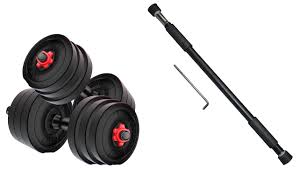


- Dumbbells(Various weights depending on your fitness level.)
- Resistance Bands:( For face pulls.)
- Pull-up Bar:( Or an assisted pull-up machine.)
- Yoga Mat: (For comfort and support during floor exercises like crunches, planks, and Russian twists.)
- Weight Vest: (For adding resistance to bodyweight exercises like squats and lunges.)
- Jump Rope: (For HIIT workouts.)
Day1 : Upper Body & Core




Warm-up: 5-10 minutes of light cardio, such as walking, jogging in place, or arm circles.
- Bench press (using dumbbells) (10-15 reps)
- Pull-ups (assisted if needed) (8-12 reps)
- Lateral raises (using light dumbbells) (10-15 reps)
- Crunches (15-20 reps)
Cardio : Swimming (30 minutes)
Stretching : Chest, shoulders, triceps, biceps, upper back
Day2 : Lower Body & Core




Warm-up: 5-10 minutes of light cardio, such as walking, jogging in place, or arm circles.
- Squats with dumbbells (10-15 reps)
- Romanian deadlifts (10-15 reps)
- Plank with leg lifts (10-15 reps per leg)
- Russian twists (15-20 reps per side)
Cardio : Brisk walking (30 minutes)
Cool-down : 5 minutes of stretching.
Stretching : Hamstrings, quads, calves, lower back
Day 3 : Rest or Active Recovery
Light activity like walking, yoga, or gentle stretching.
Day 4 : Full Body Circuit





Warm-up: 5-10 minutes of light cardio, such as walking, jogging in place, or arm circles.
- Squats with dumbbells (10-15 reps)
- Push-ups (10-15 reps)
- Pull-ups (assisted) (10-15 reps)
- Lunges with dumbbells (10-15 reps)
- Overhead press with dumbbells (10-15 reps)
- Repeat the circuit 2-3 times.
Cardio : running and walking (30 minutes)
Cool-down : 10 minutes of stretching.
Stretching : Full body stretch
Day 5 : Upper Body & Core




Warm-up: 5-10 minutes of light cardio, such as walking, jogging in place, or arm circles.
- Incline dumbbell press (10-15 reps)
- Pull-ups (assisted) (8-12 reps)
- Face pulls (using resistance bands) (10-15 reps)
- Plank (hold for 30 seconds, repeat 2-3 times)
Cardio : Dancing (30 minutes)
Cool-down : 10 minutes of stretching.
Stretching : Chest, shoulders, triceps, biceps, upper back.
Day 6 : Lower Body & Cardio


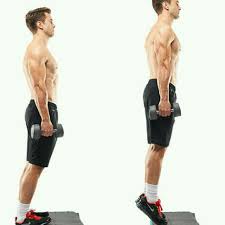
Warm-up: 5-10 minutes of light cardio, such as walking, jogging in place, or arm circles.
- Bulgarian split squats (10-15 reps per leg)
- Deadlifts (10-15 reps)
- Calf raises with weights (20-30 reps)
Cardio :
High-intensity interval training (HIIT) (20-30 minutes) – alternate between short bursts of intense exercise (e.g., sprinting) and periods of low-intensity exercise (e.g., walking).
Cool-down: 10 minutes of stretching.
Stretching: Hamstrings, quads, calves, lower back
Day 7: Rest or Active Recovery
Light activity like walking, yoga, or gentle stretching.
Summery :
This workout can make you jump to new steps for fitness and can provide you with a new way of accelerating your muscle and mental growth as well. Try not to over do it .
Advance Home Gym guide For seniors:
Ready to take your fitness to the next level? This is the program for those who need higher-level at-home workouts for strength, endurance, and explosiveness. You’re going to learn all cutting-edge training techniques that allow you to get more in less time: plyometrics, supersets, drop sets, and high-intensity interval training (HIIT). There will also be challenging variations of bodyweight, dumbbell, and resistance band exercises.
This will include a step-by-step guide on creating an optimal home gym setup for advanced training, with professional equipment recommendations and space utilization techniques to create an efficient and effective training environment. To wrap it all up, we’ll share with you essential advanced nutrition and recovery strategies crucial for supporting your intense training program. This is the step-by-step guide that would guarantee your peak performance within the constraints of your home gym.
Disclaimer:
The following routines are designed for proper advanced gym persons or pro at gym exercise with vast knowledge and experience in terms of fitness. Before trying these routines Consult a fitness expert before you try any exercise especially if you have any medical conditions.
For an effective home gym setup, consider investing in the following equipment: a barbell with weight plates, a set of adjustable dumbbells, a pull-up bar mounted or freestanding, an adjustable weight bench, resistance bands with varying resistance levels, and a yoga mat for floor exercises.
Equipment Required :



- Dumbbells(Various weights depending on your fitness level.)
- Resistance Bands:( For face pulls.)
- Pull-up Bar:( Or an assisted pull-up machine.)
- Yoga Mat: (For comfort and support during floor exercises like crunches, planks, and Russian twists.)
- Weight Vest: (For adding resistance to bodyweight exercises like squats and lunges.)
- Jump Rope: (For HIIT workouts.)
Day1: Lower Body & Core



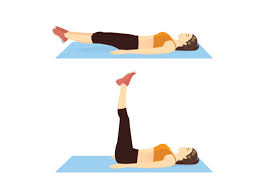
Warm-up: 20 minutes of high-intensity interval training (HIIT), such as sprinting and jogging.
- Front squats (8-12 reps)
- Deadlifts (8-12 reps)
- Side plank with hip dips (10-15 reps per side)
- Leg raises with weights (10-15 reps per leg)
Cardio: Swimming (30 minutes)
stretching : Hamstrings, quads, calves, lower back
Day2: Upper Body & Core



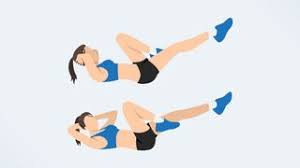
Warm-up: 10 minutes of low-intensity interval training (LIIT), such as sprinting and jogging.
- Incline dumbbell press (8-12 reps)
- Pull-ups (8-12 reps)
- Overhead press (using heavier dumbbells) (8-12 reps)
- Bicycle crunches (15-20 reps per side)
Cardio: Brisk walking (20 minutes)
stretching : Chest, shoulders, triceps, biceps, upper back.
Day3: Rest or Active Recovery
Light activity like walking, yoga, or gentle stretching.
Day4: Full Body Circuit





Warm-up: 20 minutes of HIIT.
- Front squats (8-12 reps)
- Push-ups (8-12 reps)
- Pull-ups (8-12 reps)
- Walking lunges
- Overhead press with heavier dumbbells (8-12 reps)
- Repeat the circuit 2-3 times.
Cool-down: 5 minutes of deep breathing exercises.
Stretching: Full body stretch
Day5: Lower Body & Cardio


Warm-up: 5-10 minutes of light cardio, such as walking, jogging in place, or arm circles.
- Romanian deadlifts (8-12 reps)
- Single-leg deadlifts (8-12 reps per leg)
- Jumping lunges (10-15 reps)
Cardio:
High-intensity interval training (HIIT) (20-30 minutes) – alternate between short bursts of intense exercise (e.g., sprinting) and periods of low-intensity exercise (e.g., walking).
Cool-down: 10 minutes of jogging.
Stretching: Hamstrings, quads, calves, lower back
Day6: Upper Body & Core


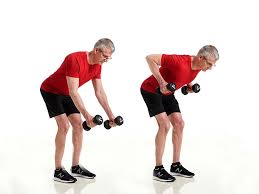

Warm-up: 5-10 minutes of light cardio, such as walking, jogging in place, or arm circles.
- Overhead press (using heavier dumbbells) (8-12 reps)
- Pull-ups (8-12 reps)
- Bent-over rows (using dumbbells) (8-12 reps)
- Russian twists (15-20 reps per side)
Cardio: Dancing (30 minutes)
Stretching : Chest, shoulders, triceps, biceps, upper back
Day7: Rest or Active Recovery
Light activity like walking, yoga, or gentle stretching.
Important Gym guiding Tips :
- Gradually increase the weight, reps, or sets as you get stronger. This is crucial for continued muscle growth.
- Focus on maintaining proper form throughout each exercise. This will help prevent injuries and ensure you’re effectively targeting the intended muscles.
- Always warm up with 5-10 minutes of light cardio, such as jogging in place or jumping jacks, followed by dynamic stretches.
- Cool down with 5-10 minutes of light cardio and static stretches.
- Fuel your body with a balanced diet that includes protein, carbohydrates, and healthy fats to support muscle growth and recovery.
- Drink plenty of water throughout the day, especially before, during, and after workouts.
- Rest when you need to. Don’t push yourself too hard, especially when you’re starting.
This routine provides a solid foundation for an advanced home workout. Remember to prioritize proper form, listen to your body, and enjoy the process!
Summery:
Attend this programme only if you have several years of intense exercising training because it has more exercise that will lead you to energy loss or it could give muscles injuries.
This advanced exercise can stimulate your muscles to grow even better with an intense pace. Try this workout only if you have proper knowledge and have experience about several years of intense gym training.
Be Cautious from Physical effects of overtraining
Nowadays, training for success is a delicate balance between pushing oneself hard enough to develop the required fitness, strength and skills to achieve peak performance, yet not too far so as to incur the negative consequences of overtraining. As discussed above, overtraining can have long-term negative implications on a young athlete’s performance. Two avenues through which this may be overuse injuries and a syndrome that can be termed as “staleness”.
Be cautious with age limit
Muscle and bone mass naturally decline as you age. However, weightlifting can counteract this effect by stimulating muscle and bone growth. Although the general principles of weightlifting apply to older adults, modifications may be necessary. For example, if you have injuries, you can substitute back squats with more joint-friendly options like goblet squats. A beginner program is essential before advancing. Avoid very strenuous workouts since the risk of injury increases with age.
Also, have longer periods between workouts; your body might require more time to recover. Although it has its challenges, steady weightlifting can bring out many benefits and help keep you fit with age.
Do not forget to take your nutrition well:
Good nutrition is one of the foundations of good health. Nutritional intake below or in excess of our requirements can cause, or increase the risk of, numerous health problems, therefore making changes to a person’s diet can help maintain and restore health. In the general non-athletic population, good health cannot be improved further simply by adding nutrients to the diet. However, the diet of those involved in sport and exercise can be manipulated in a way that can bring rapid, clear benefits to performance.
Frequently Asked Questions:
Is it good for seniors to join gym?
Indeed, exercising at the gym is pretty beneficial for seniors. This practice can improve overall health and fitness and well-being, reducing the risk of having chronic diseases such as heart disease, stroke, or type 2 diabetes, maintaining a healthy weight by increasing muscle strength and bone density, and improving mental health by reducing stress and anxiety.
What is the best time of day for seniors to exercise?
Most marked in men and seniors, who may reap maximum benefits of exercising during the afternoons in relation to the issue of longevity. Perhaps shift workers and individuals working late hours or late evenings will not like early morning workouts.
What is the number one exercise you should do as you get older
This movement in which you drop down and return up works all the major muscle groups in both your upper and lower body. “The squat is the most important exercise for seniors
The bottom line:
Your workout routine should be customized to your fitness level and how your body reacts to the exercise.
This helps you adapt and find what works best for you. A balanced diet is crucial alongside exercise for optimal results.
If you have any health concerns, consult a doctor before starting any new workout program.
By combining personalized exercise with a healthy diet and prioritizing your overall health, you can effectively achieve your fitness goals.



